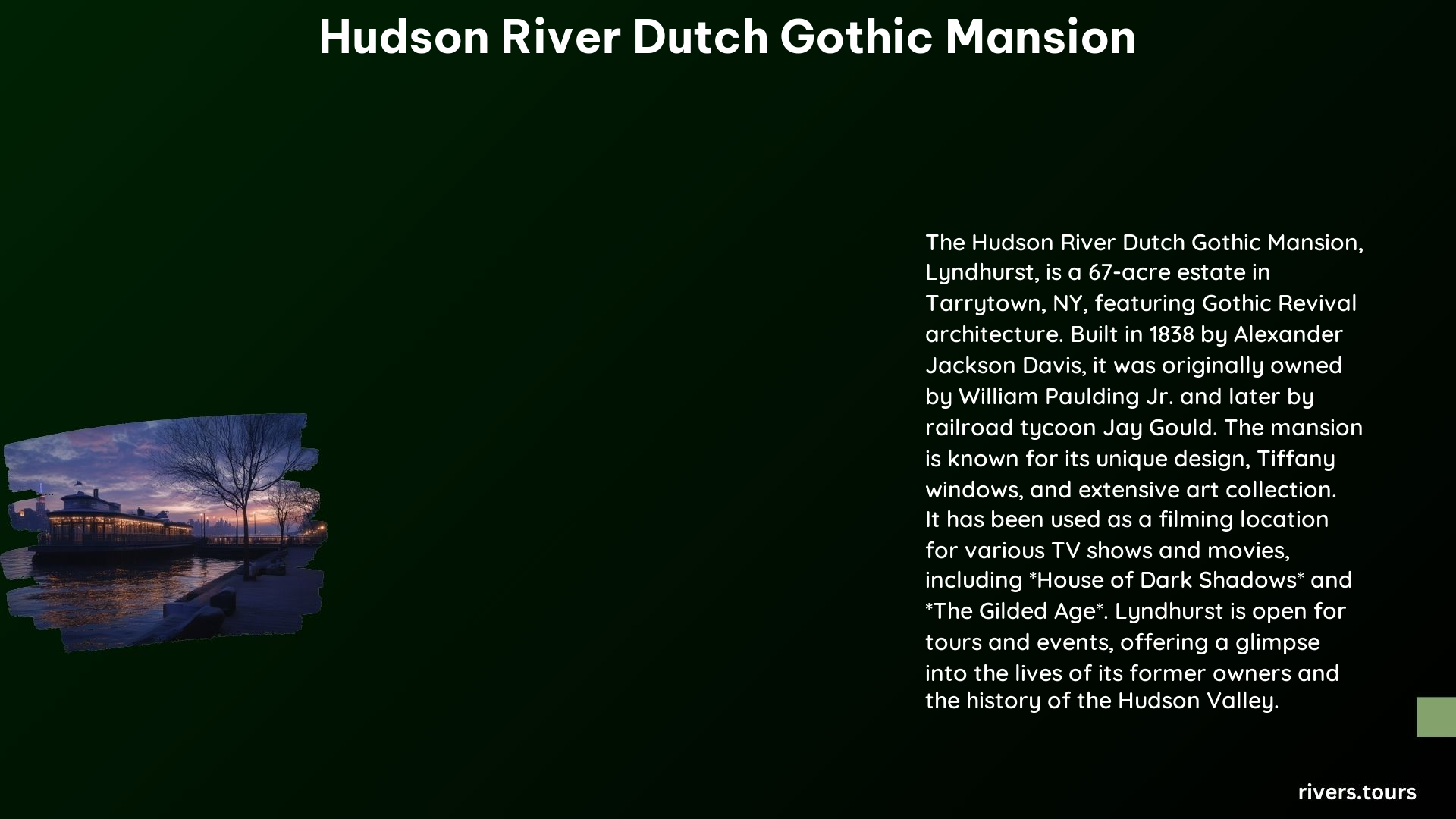The Hudson River Dutch Gothic Mansion is a unique architectural style that emerged in the Hudson Valley region, characterized by a blend of Dutch and Gothic Revival elements. This style reflects the cultural and historical context of the region, with specific features that set it apart from other architectural styles.
What are the Key Features of Hudson River Dutch Gothic Mansions?
The Hudson River Dutch Gothic Mansion is defined by several distinct features that showcase the blend of Dutch and Gothic Revival influences:
- Dutch Influence:
- Steep-pitched roofs and gable ends facing the street, reminiscent of traditional Dutch architecture.
-
Use of local materials such as wood, brick, and stone, often with ornate carvings and decorations.
-
Gothic Revival Elements:
- Pointed arches, ornate carvings, and the use of dark wood, geometric forms, and trefoils/quatrefoils, typical of Gothic Revival architecture.
-
Inspiration from medieval universities, churches, and cloisters, reflecting the Romanticism and intellectualism of the Victorian Era.
-
Regional Adaptations:
- The use of brown sandstone deposits in the southern part of the valley, leading to a preference for this material in construction.
- The incorporation of local architectural traditions, such as the use of wood frames encased in brick in Albany and stone houses in Kingston.
How did Andrew Jackson Downing Popularize the Gothic Revival Style in the Hudson Valley?

Andrew Jackson Downing, a prominent architect from Newburgh, NY, played a pivotal role in introducing and popularizing the Gothic Revival style in the Hudson Valley. His books, Cottage Residences and Architecture of the Century, showcased the style and encouraged its adoption in the region. Downing’s work helped to make the Gothic Revival style accessible and desirable to the general public, leading to its widespread adoption in the Hudson Valley.
What are Some Notable Estates Along the Hudson River?
The Hudson River Valley is home to numerous estates that showcase the Gothic Revival style, including:
- Lyndhurst: Considered one of the finest examples of American Gothic architecture.
- Sunnyside: A historic estate that reflects the Gothic Revival style.
- Philipsburg Manor: A well-preserved estate that showcases the region’s architectural heritage.
- Van Cortlandt Manor: Another estate that exemplifies the Hudson River Dutch Gothic Mansion style.
These estates are meticulously restored and maintained to preserve their historical and cultural significance, offering visitors a glimpse into the architectural legacy of the Hudson Valley.
References
-
Mariani, J. (2022, November 7). Lyndhurst Mansion Is One Of The Jewels Of The Hudson River Valley. Forbes. https://www.forbes.com/sites/johnmariani/2022/11/07/lyndhurst-mansion-is-one-of-the-jewels-of-the-hudson-river-valley/
-
Hudson River Valley Institute. (n.d.). I. Colonial Era (1609-1783). Hudson River Valley Institute. https://www.hudsonrivervalley.org/colonialera
-
Schiavone, D. (2016, February 12). Gothic Revival in the Hudson Valley. Historic Huguenot Street. https://hhscollections.wordpress.com/2016/02/12/gothic-revival-in-the-hudson-valley/.
